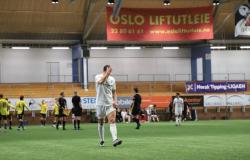It is moving towards the start of construction for the campus collection, a project that has been discussed and debated since long before most of today’s students started at NTNU. But: If you are going to start a bachelor’s at Dragvoll in the autumn, it is still unlikely that you will be able to finish your master’s together with the Siving students down at Gløshaugen.
After a sharp downscaling in 2022, signed by then Minister of Research and Higher Education Ola Borten Moe, the management framework for the project is now NOK 6.7 billion and includes an incredible 91,000 square meters of new buildings and renovations on the Gløshaugen campus. The project is divided into seven sub-projects (P0–P6), and everything is scheduled to be completed in 2030.
P0: Infrastructure and landscape
The project includes things such as water and sewage, district heating, IT and storm water. A stabilizing support fill in Dødens dal is also part of this sub-project. This is the first sub-project to be started, and it will extend over the entire construction period of the other sub-projects.
P1: Economy and innovation
The Department of Economics and Technology Management is moving into a large new building in Hesthagen next to the Business School. The building will have six floors, including a basement, and will be higher than the Adolf Øien building (Handelsshøyskolen) on the other side of Klæbuveien. Total approx. 18,200 m2 gross area.
P2: Materials technology
The Department of Materials Technology will move into a new building on a plot of land that is currently unused, south of the Gløshaugen plateau. Total approx. 13,200 m2 gross area.
P3: Logistics center/
graphic center
A new building in Lerkendal/Valgrinda that will take care of logistics and outdoor functions on campus. The graphic center is also moving here from Dragvoll. A total of approx. 3,500 m2 gross area.

P4: Art, media studies and music
These will be brought together in a new building to be built at the very north of Høyskoleparken, where Klæbuveien/Vollabakken meets Høgskoleveien and Christian Fredriks gate. According to requirements from the National Archives, the new building must be located at least 7.5 meters away from the avenue up to the main building, which is listed. Total approx. 8,800 m2 gross area.

P5: The main building/
main hub
In a unified campus, the main building with the main hub should “be a portal into the campus and the unifying heart of the campus”. It includes the library as well as areas for a bookshop and placement of the Learning Hub, a holistic educational learning support for lecturers at NTNU. To achieve this, parts of the main building will be rebuilt and a new extension will be built on the south side. The main building is listed, this must be taken into account in the conversion. Covers a total of approx. 11,400 m2 gross area.

P6: Humsam
The humanities and social science academic environments will move to a new, large building to be built on the site where Berg/Metallurgy and Skiboli are located today. A total of approx. 34,000 m2 gross area.

Mette Siri Brønmo, communications manager in the Building Owners Department in Statsbygg, explains that P0 is the first sub-project out.
– The first sod for infrastructure and landscaping will take place at the end of the year, while construction for P1 in Hesthagen and P2 on the Gløshaugen plateau will start in 2025, she says.
Relocation of students and staff will take place continuously as the building is completed.
– The first buildings in Hesthagen and on the Gløshaugen plateau are planned to be ready for use in 2027, while sub-project P5 Main building, which is the last building to be built in the NTNU campus collection, is planned to be completed in 2030, says Brønmo.
ALSO READ: Responds to merger: – 110 years of traditions are at risk
Archaeological excavations
Before the construction work can start, archaeological excavations must be carried out in several places in and around Gløshaugen.
– Archaeological excavations are established by law and regulations, and the NTNU Science Museum is responsible for the excavations, says Brønmo in Statsbygg.
It will be dug in three areas. First up is Hesthagen, where you will start during the spring, and later excavations will be made in the area by Høgskoleveien and the main building.
– In these three areas, the county council has found traces that they believe are important to look into before the actual construction work begins, explains Brønmo.
Parking spaces are disappearing
In connection with the archaeological excavations, the large car park at Hesthagen will be closed as early as 27 May this year, but provided that no significant archaeological discoveries are made, it will be possible to reopen it for a shorter period.

– The car park will be closed for good when the construction work starts from the turn of the year 2024/2025, says Brønmo in Statsbygg.
Communications adviser for NTNU campus development, Janne S. Almhjell, says that the around 260 parking spaces that are disappearing from Hesthagen will not be replaced by new ones.
– The regulatory plans for the NTNU campus assembly that the municipality has adopted assume that no new parking spaces for private cars can be established. This is the result of the municipality’s parking policy and in line with NTNU’s environmental development plan.
Almhjell says that NTNU is revising the parking regulations to take care of special groups and make the best possible arrangements for NTNU’s other students and staff.
– We have a goal of arriving at new rules for parking during 2024. The increase in the number of students and employees at Gløshaugen will mean that more people will have to rely on public transport and cycling/walking to get to their place of work and study.
Footbridge over Høgskoleparken

A footbridge will connect the new building in Hesthagen with the Gløshaug plateau. A staircase and a lift on the outside of the building will make the footbridge accessible to the public and ensure a universal design. Bronmo in Statsbygg says that the contractor for P1 will be chosen in May.
– Then we will enter further project development and detailed design of the building and bridge. It will give us more details later in the autumn, but what we are concerned with is that the bridge should have a light architectural expression and be designed in muted colours.


She explains that the footbridge is regulated with a wiggle room, which means that existing trees and vegetation in the park must be taken into account as much as possible.
Popular walkway is closed, but replaced by new stairs
The popular walkway from the Adolf Øien building (Handelsshøyskolen) up to Gløshaugen will be closed during the construction period. Especially in the winter, when snow and ice make the other paths impassable, the heating cables make this walkway the only passable way from the west side up to the Gløshaugen plateau.
The walkway will be replaced by a new staircase NTNU will build through Høyskoleparken, a little north of Hesthagen. Almhjell from NTNU says that the new staircase will also be heated so that it can be used in the winter.
– Construction of the stairs will start in mid-April, and it will be completed in January 2025.
Backfilling in the Valley of Death: – Will shield UKA
Due to quicksand and unstable ground conditions in the area, a backfill must be created in Dødens dal. Brønmo from Statsbygg explains that this is a measure to prevent landslides in the area.

– A support fill is being carried out in Høyskoledalen as a measure for the development of the campus on the Gløshaugen plateau, especially due to the development of sub-project P6 Humam and further development under the auspices of NTNU campus development.
Statsbygg will endeavor that the work on the backfill will not affect the implementation of UKA, which every two years builds a large concert stage in Dødens dal.
– The work on filling support will continue in such a way that it avoids conflicting with the implementation of the UKE events, which we fully understand are important for the students, says Brønmo.
She says that Statsbygg is also aware that the area is an important arena for student sports.
– We have a good dialogue with NTNU and Sit in this work to ensure that student sports are also taken care of in the implementation of this basic work.
In contact with the neighbours
In November, Statsbygg organized an open meeting for neighbors and other stakeholders. Brønmo explains that Statsbygg is keen to have a dialogue with the parties concerned:
– Throughout the pre-project phase, Statsbygg has held open meetings for all stakeholders and held open office days to be available to those who are affected and want more information about the construction project. We will of course continue with this throughout the construction period.
Brønmo says that they also have a close collaboration with NTNU to deal with any inconvenience students and staff at Gløshaugen may experience during the construction period.
– In a large and extensive construction project like this, students and staff will be affected by the construction work. Measures will be initiated to reduce the disadvantages, and Statsbygg and contractors will prepare good plans for predictable and safe mobility at Gløshaugen during the construction period.
Environmental ambitions?
One of the arguments for campus collection was sustainability, and NTNU writes on its website that “NTNU Campus collection must have a low climate footprint, low energy and power requirements, increase biological diversity and improve site qualities on campus”.
There has been criticism in the media related to the fact that the environmental ambitions were downgraded in connection with the project being scaled down. However, Brønmo in Statsbygg says that they still have climate ambitions.
– Despite tight budgets, we have ambitions to be able to carry out the project better than the minimum requirements in TEK17. For the contractors who will now be selected to build the first two buildings, we have made clear demands for climate-friendly and sustainable solutions.
ALSO READ: Activists stopped traffic to Equinor’s offices in Rotvoll.
















